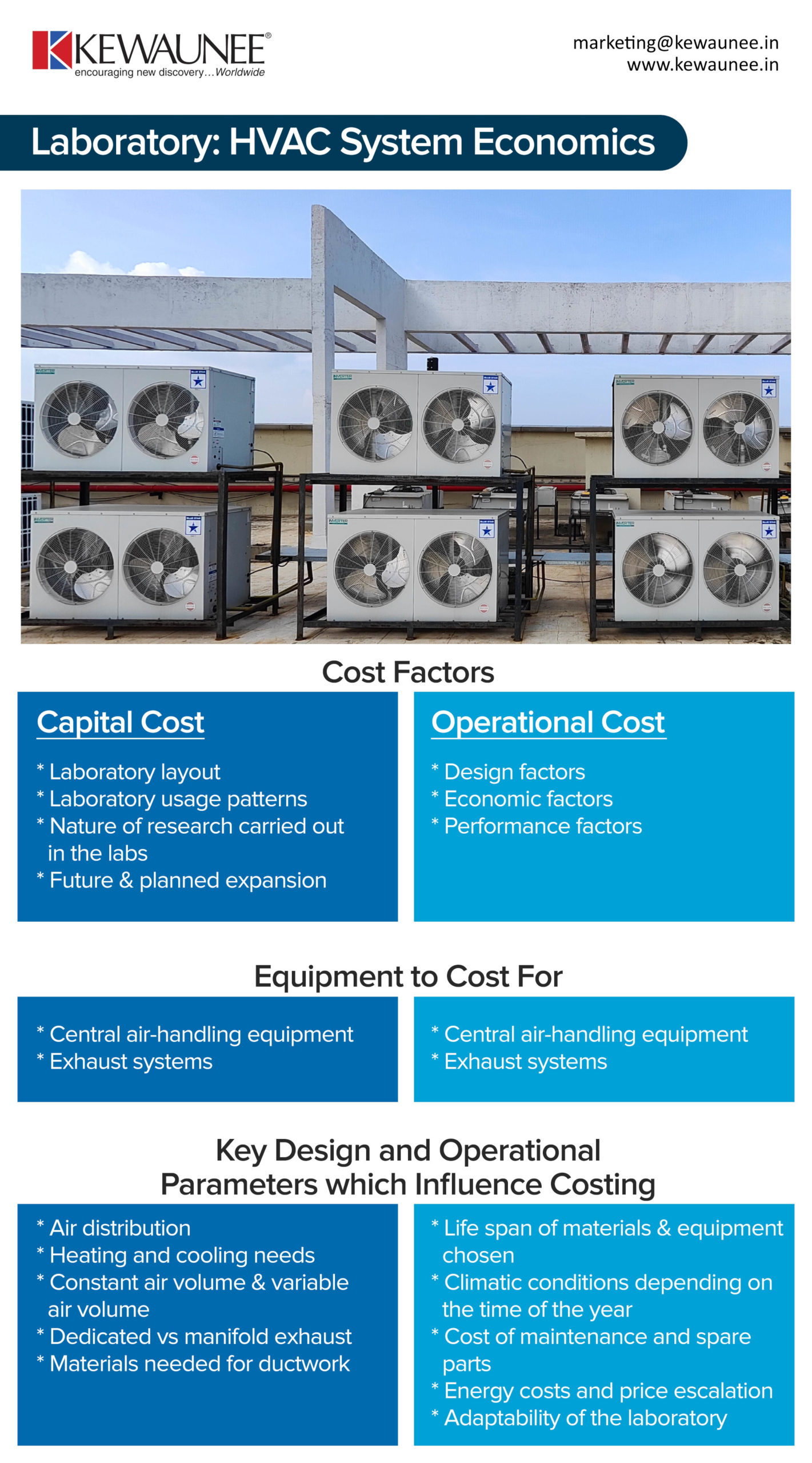Laboratory: HVAC System Economics
HVAC is one of the significant operating expense in a laboratory. The cost of operating HVAC for laboratories broadly falls under two categories:
Capital Cost: The initial cost to procure and setup. Because HVAC is extremely critical in maintaining the environment within the laboratory, the initial cost to purchase and setup can be a considerable percentage of the total budget. Depending on the needs, the capital cost may vary between 25% to even 50% of the total costs.
Operational Cost: The cost to keep the systems maintained and in perfect running conditions. Additionally, the energy costs must also be factored in during the initial budgeting process. Considering the life span of HVAC equipment and system can extend beyond 15 years, it’s important to carefully plan for the operational costs as well.
In this blog, let’s look at the key elements of the HVAC system economics.
| Capital Cost | Operational Cost | |
| Cost Factors |
|
|
| Equipment to cost for |
|
|
| Key design and operational parameters which influence costing |
|
|
Ref: ASHRAE
A well-planned budget helps the research teams have a good handle on their yearly spend and activities. Download a free copy of the Laboratory Operating Expense Planner and get started with your planning activities.
Comments are closed.











